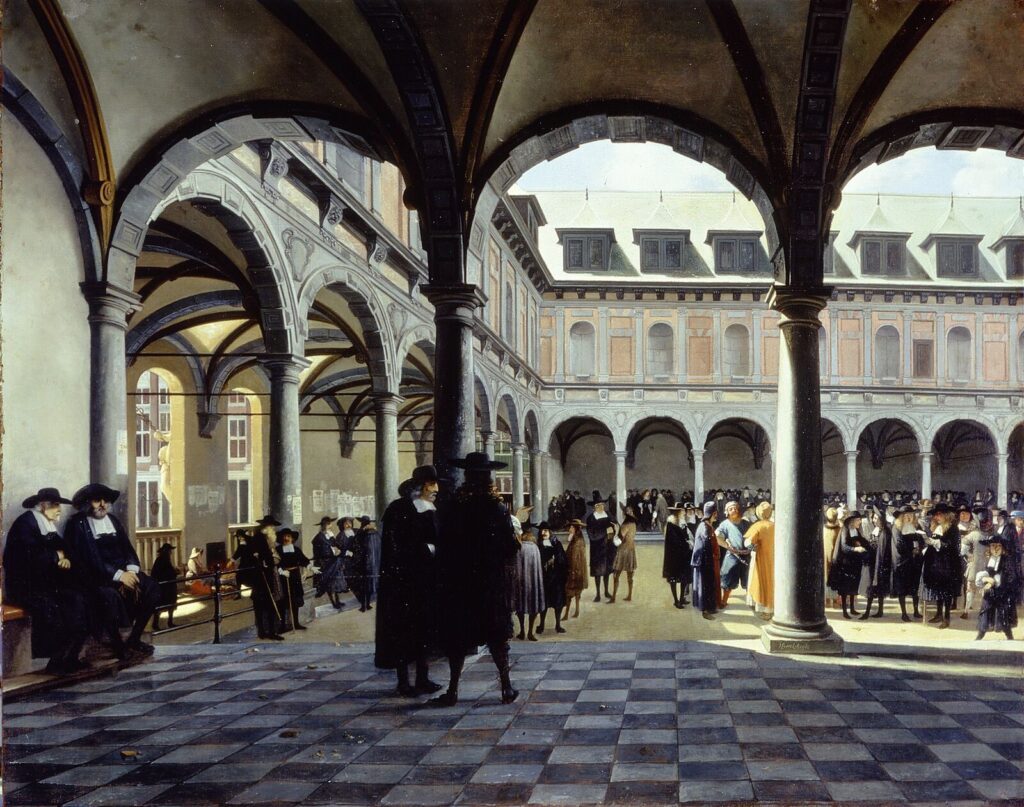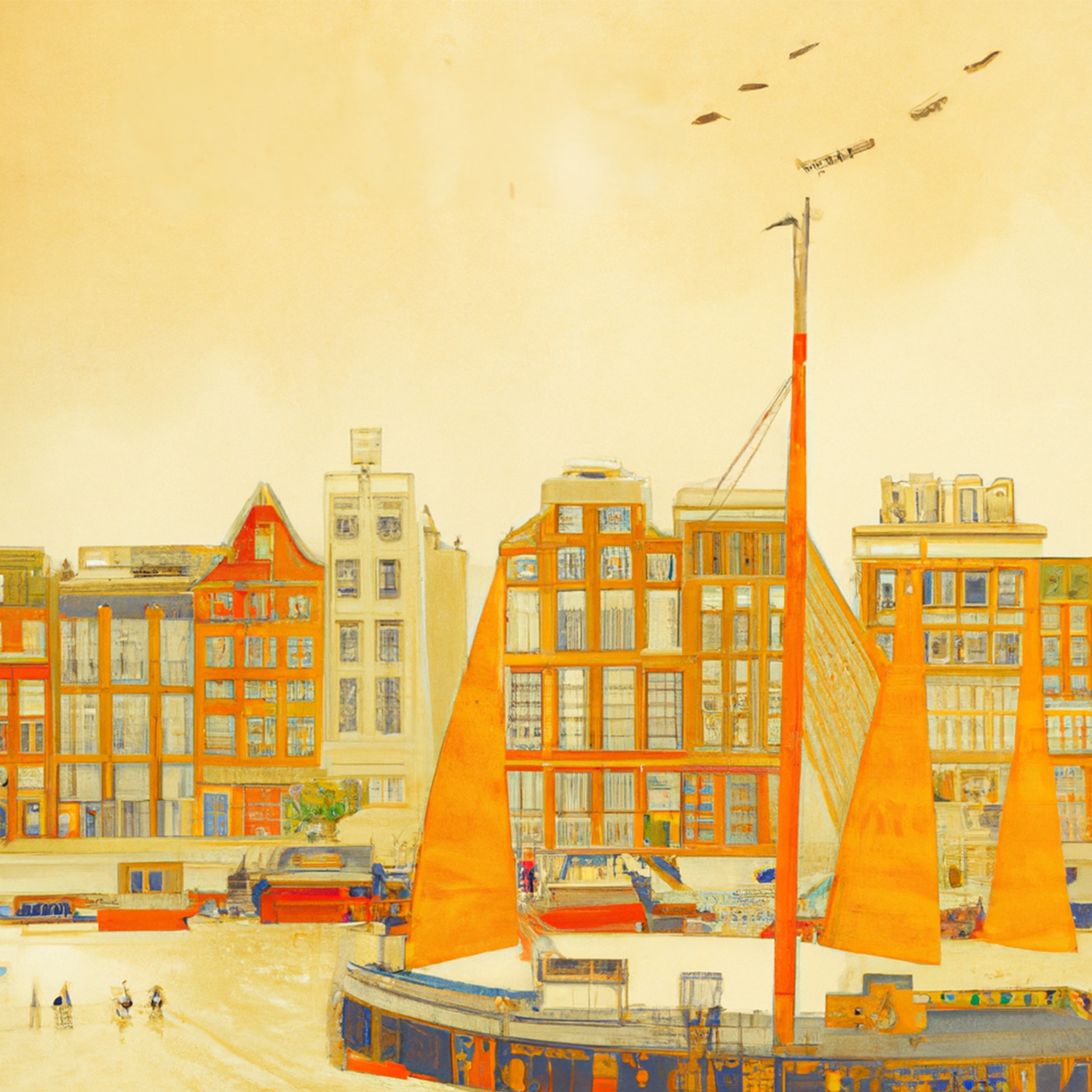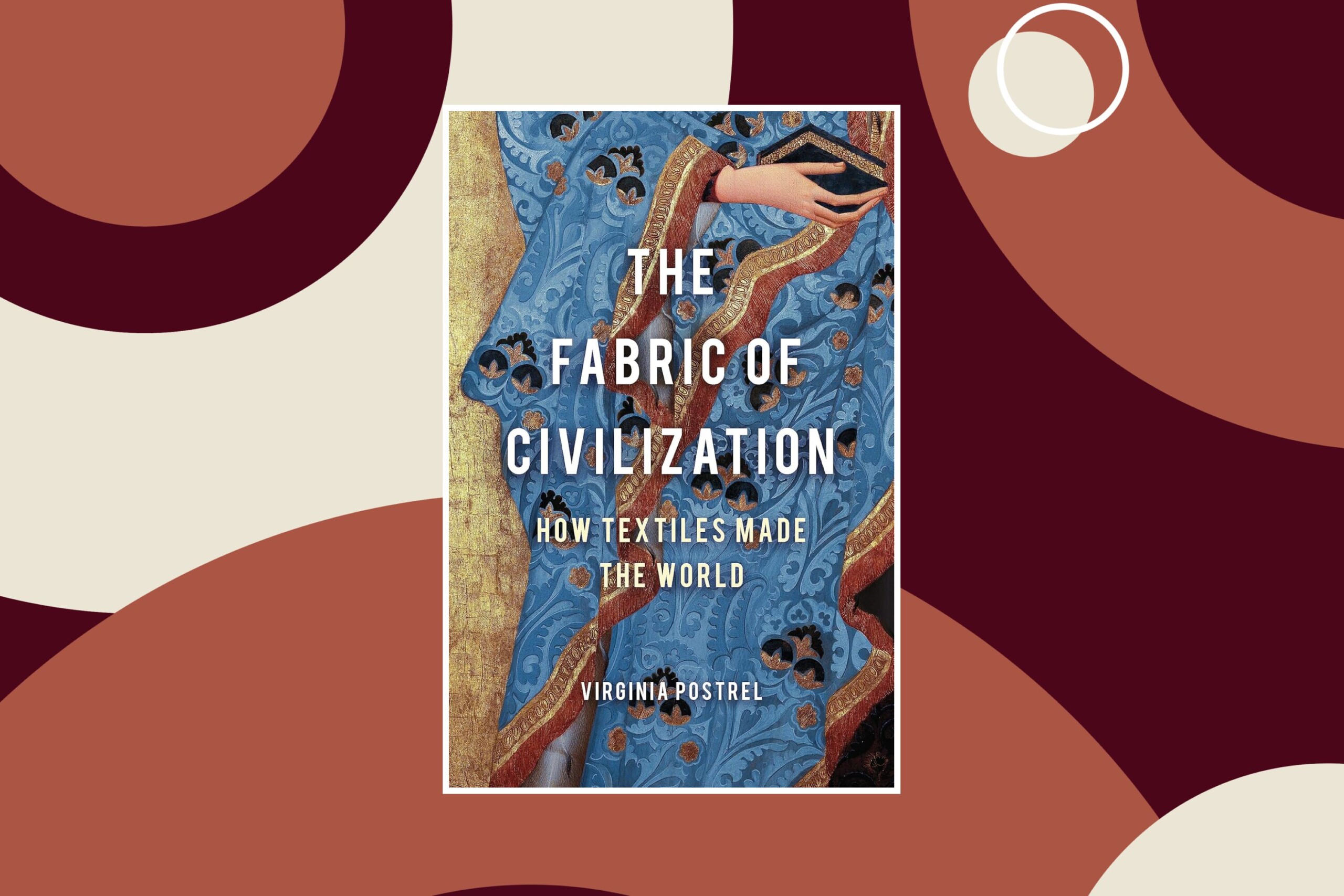You can find a PDF of this lesson plan here.
Lesson Overview
Featured article: Centers of Progress, Pt. 36: Amsterdam (Openness) by Chelsea Follett
“By embracing foreign peoples, goods, and ideas, what began as a small fishing town became a prosperous global capital of philosophy, science, and art. Far-ranging trade, new corporate structures, innovations in finance and engineering, and acceptance of intellectual and religious refugees, all helped to make Amsterdam successful,” writes Chelsea Follett in this article about Amsterdam during the 1600s.
In this lesson, you’ll learn about how a unique set of cultural values that emphasized openness and tolerance helped lead Amsterdam to the pinnacle of European commercial success during the Dutch Golden Age.


Warm-up
Look closely at the two paintings of the Amsterdam Stock Exchange. Then discuss these questions as a class:
- What do you think the men are doing in these paintings?
- What is the purpose of the Exchange where they are gathered?
- What was the Commercial Revolution and how is connected to joint-stock companies?
- What does the architecture of the buildings and the mens’ clothing tell you about thelevel of prosperity of Amsterdam in the 1600s?
- Where did the wealth of Amsterdam derive from at that time?
FOR THE TEACHER:
- The expansion of Amsterdam’s trade in the mid-17th century allowed the city to develop its extant banking system and commodity exchange services to the highest level of volume and sophistication in Europe. In its Exchange, merchants and brokers from all over the world traded goods, currency, rumors – and an unprecedented volume of stocks. Contemporary reports sketch the bustle in the new Exchange building designed by Hendrick de Keyser (1565-1621), the most respected architect and sculptor of his generation. Artists such as Emmanuel de Witte painted the busy throngs of domestic and foreign traders. Source.
- The painting excellently documents the expansion of the Exchange in 1668, based on a design by the Amsterdam architect Daniël Stalpaert. The most important change was the merging of the two southern gate buildings into one building with a classic facade on the Rokin. A statue of Mercury, the god of trade, by Bartholomeus Eggers was erected between the two hallways. The sculpture can be seen to the left between the two open arches; Mercury’s caduceus staff stands out against the sun-lit fronts on the Rokin. Source.
Questions for reading, writing, and discussion
Read the article, then answer the following questions:
- Use your background knowledge. Prior to and during the European wars of religion, what were the economic, political, and cultural reasons for the relative religious tolerance of the Dutch?
- Economic reasons:
- Political reasons:
- Cultural reasons:
- Describe the business activities of the Dutch East India Company. Why does Follett say, “The Dutch East India Company has . . . been called the prototype or forerunner of the modern corporation”?
- Why was the buying of stock in such corporations as the Dutch East India company so attractive to investors? What were the benefits of stock investing over traditional forms of capital allocation?
- Dutch wealth and tolerance attracted writers and artists of the highest caliber. List at least five well-known intellectuals connected with Amsterdam during the Dutch Golden Age.
Extension Activity/Homework
Investigate the Dutch Trade in Enslaved People
Follett writes, “It must be noted that the [Dutch East India] company was, appallingly, also tied to the Dutch slave trade.” Although it formed only a small portion of their worldwide operations, the Dutch East India Company, and by extension, the Amsterdam Stock Exchange benefitted from the horrific trade in enslaved people from Africa.
Conduct independent research and write a 2–3-page report on the history of the Dutch slave trade during the Golden Age. In your report, be sure to answer the following questions:
- During which period were Dutch slave traders most active?
- From which regions and states did Dutch traders purchase enslaved people?
- In which regions and activities did Dutch entrepreneurs utilize enslaved labor?
- Which Dutch institutions benefitted directly from the slave trade?
- What were the short- and long-term consequences of the Dutch slave trade?
Examine a Rembrandt
Rembrandt is particularly well-known for his portraits. Watch the following video about the masterpiece The Anatomy Lesson of Dr. Tulp and answer the questions below.
- The Guild of Surgeons commissioned the portrait of themselves. What type of institution is a guild?
- In what ways are guilds representative of a type of civil society institution separate from the state and the Church?
- How are the values of the Scientific Revolution (e.g., empiricism) evident in the dissection being portrayed?
- How were the economic dynamism of the Dutch Republic and the growing middle class connected to the patronage of artists such as Rembrandt?
- How does this painting represent a break from prior traditions of Western portrait making?
Discover Vermeer
Google Arts and Culture has created an online gallery of all 36 Vermeer’s paintings together in one place. Enter the pocket gallery, choose a Vermeer masterpiece to analyze, and conduct an OPTIC analysis of the artwork.
Which Vermeer painting are you analyzing? Write the title, then cut and paste a screenshot of the painting.
| OPTIC Analysis |
| O – Overview Summarize the “action” of the painting without analyzing its meaning yet. This is equivalent to paraphrasing a document. |
| P – Parts of the Painting Describe the placement of people and objects in the painting. Describe color, lighting, and movement. |
| T – Title What does the title tell you about the painting? How much does it add to what you understand or do not understand about the painting? Explain your answers. |
| I – Interrelationships What historical themes—social, political, environmental, cultural, economic, technological—does the painting reflect? |
| C – Conclusion Provide an analysis of the entire composition. What is the artist trying to portray in this painting? |


